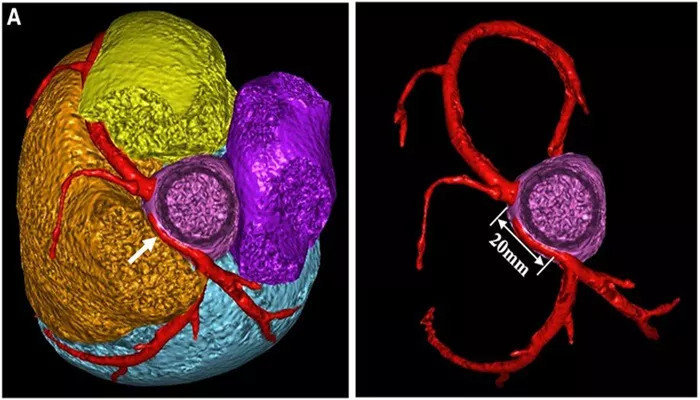Sinus arrhythmia is a common, usually benign condition characterized by a variation in heart rate that correlates with the respiratory cycle. This arrhythmia is often detected during an electrocardiogram (ECG) examination, and its recognition is crucial for differentiating it from more serious arrhythmias. This article provides a comprehensive guide on how to identify sinus arrhythmia on an ECG, detailing its characteristics, diagnostic criteria, and clinical significance.
What Is Sinus Arrhythmia?
Sinus arrhythmia refers to a regular variation in heart rate that occurs due to the influence of the autonomic nervous system, specifically the vagal nerve, on the heart’s pacemaker cells in the sinoatrial (SA) node. This arrhythmia is often seen as a normal physiological response, particularly in younger individuals and athletes. It is typically associated with changes in the heart rate during respiration—an increase during inspiration and a decrease during expiration.
see also: The 6 Best Ways to Treat Sinus Arrhythmia
Characteristics of Sinus Arrhythmia on ECG
a. Heart Rate Variability
The primary characteristic of sinus arrhythmia on an ECG is the variability in heart rate. Unlike other arrhythmias, sinus arrhythmia does not lead to irregular intervals between the PQRST complexes but rather shows a consistent pattern of heart rate fluctuations. During inspiration, the heart rate typically increases, while it decreases during expiration.
b. P-Wave Consistency
In sinus arrhythmia, the P waves are consistently present and show a normal morphology. Each P wave is followed by a QRS complex, indicating that the arrhythmia originates from the SA node. The P waves should be uniform in appearance, and the PR interval should remain constant, reflecting normal atrioventricular (AV) conduction.
c. R-R Interval Variation
The R-R interval, which measures the time between successive R waves, exhibits variability in sinus arrhythmia. This variability is directly related to the respiratory cycle. The R-R interval shortens during inspiration and lengthens during expiration. This pattern of variability is a key distinguishing feature of sinus arrhythmia.
Diagnostic Criteria
a. Normal Sinus Rhythm
To diagnose sinus arrhythmia, the ECG must first demonstrate a normal sinus rhythm. This includes a regular rhythm originating from the SA node, with each P wave preceding a QRS complex and a consistent PR interval. The heart rate should be within the normal range of 60-100 beats per minute.
b. Respiratory Variation
Sinus arrhythmia is characterized by the presence of respiratory-related heart rate variability. An ECG should show a discernible pattern of heart rate acceleration during inspiration and deceleration during expiration. This variation is typically more pronounced in younger individuals and athletes.
c. Absence of Other Arrhythmias
It is important to differentiate sinus arrhythmia from other types of arrhythmias. On an ECG, other arrhythmias such as atrial fibrillation or ventricular ectopy will present with irregularly spaced QRS complexes or varying P wave morphology, which are not typical of sinus arrhythmia.
Clinical Significance
a. Normal Variation
In most cases, sinus arrhythmia is a normal physiological variation and does not indicate any underlying heart disease. It is often seen in children, adolescents, and athletes with high vagal tone. In these cases, sinus arrhythmia is generally considered benign and does not require specific treatment.
b. Clinical Evaluation
If sinus arrhythmia is detected, particularly in an older patient or someone with a history of cardiovascular disease, further evaluation may be warranted to rule out other possible causes of heart rate variability. An assessment of the patient’s overall cardiac health and a review of symptoms such as dizziness or palpitations are essential in determining the clinical significance.
c. Differentiation from Pathological Arrhythmias
Proper identification of sinus arrhythmia on an ECG is crucial for differentiating it from more serious arrhythmias.
Misinterpretation of sinus arrhythmia as a pathological arrhythmia can lead to unnecessary concern and additional testing.
Accurate ECG interpretation ensures that patients receive appropriate management and care.
Practical Tips for ECG Interpretation
a. Ensure Proper Lead Placement
Accurate identification of sinus arrhythmia requires proper ECG lead placement. Misplacement of leads can result in inaccurate readings and misdiagnosis. Ensure leads are securely attached and positioned according to standard ECG protocols.
b. Analyze Multiple ECG Strips
A single ECG strip may not always capture the full extent of sinus arrhythmia. Analyzing multiple strips or conducting a 24-hour Holter monitor study can provide a clearer picture of the heart rate variability and confirm the diagnosis of sinus arrhythmia.
c. Consult with a Specialist
For complex cases or when there is uncertainty in the diagnosis, consulting with a cardiologist or electrophysiologist can provide additional expertise. Specialists can offer a more detailed analysis and guidance on any further steps needed for patient management.
Conclusion
Identifying sinus arrhythmia on an ECG involves recognizing its characteristic patterns of heart rate variability related to respiration, maintaining consistent P waves and PR intervals, and differentiating it from other arrhythmias. While generally benign, accurate diagnosis is essential for ensuring appropriate patient management and avoiding misinterpretation. With proper ECG analysis and clinical evaluation, sinus arrhythmia can be effectively identified and managed, ensuring optimal patient care and reassurance.

